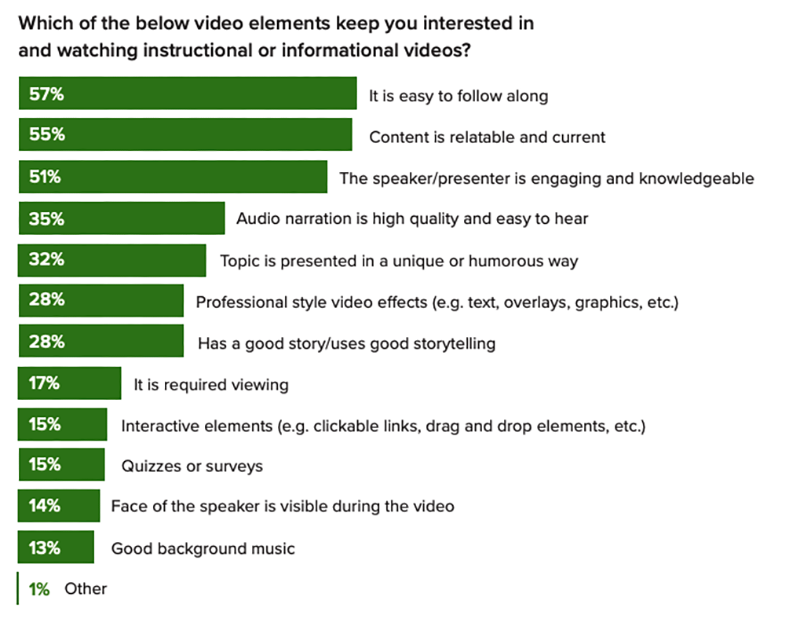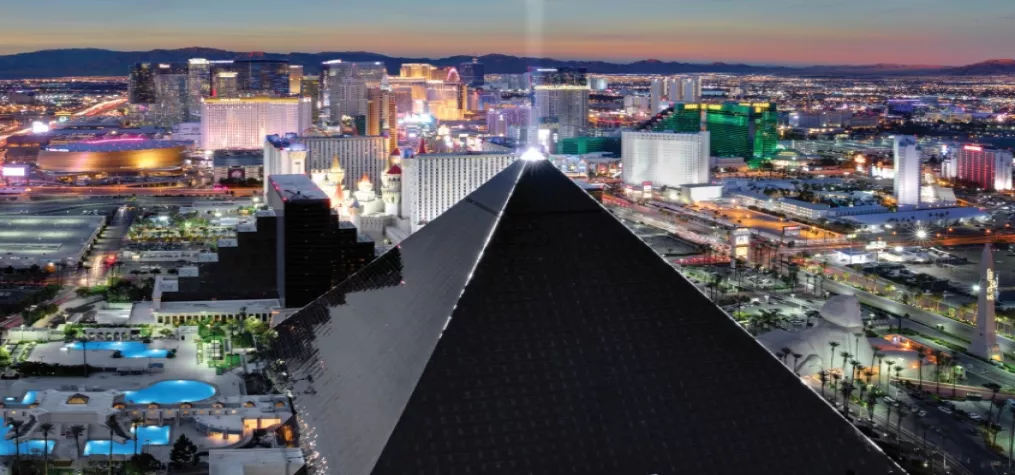The physical event circuit has made a strong comeback after years of disruption caused by COVID-19. But even with the resurgence of in-person gatherings, the virtual event space continues to thrive as evidenced by 93% of event marketers planning to invest in virtual events through 2025.
As virtual events shift from being an alternative to in-person gatherings, they must evolve to engage audiences effectively on their own terms. For corporate organizers who prefer the pre-recorded session approach, they can achieve this by focusing on the most substantive element of virtual events: video presentations. Below are tips for creating a well-balanced agenda based on the recent TechSmith 2024 Video Viewer Trends Report, which analyzed responses from 1,000+ individuals about viewer engagement, behaviors, and preferences for instructional and informational video content.
Effectively match video length with content type
Crafting a virtual event agenda sensitive to video length is crucial for attendee engagement. Video length was cited as the second most influential factor by respondents when making a choice about what video they want to watch. Viewers generally prefer video content to be 10-19 minutes on average, however, the aforementioned research revealed a correlation between content type and how long viewers will spend with it.
More than 50% of people wanted the video to be 30 seconds or less to learn about a product. Most respondents would watch no more than a 20–39-minute video to increase knowledge on a topic. Finally, the vast majority would only watch a video over 60 minutes if it was able to teach a new skill or ability to use at their job.
Leveraging this information will help event organizers balance their agenda between quick product updates, mid-length topical discussions, and long-form skill-based instructional content. Expertly piecing different session types together will maximize viewer engagement and increase the chances for multiple sessions.
Descriptions remain the best way to attract viewers
Besides matching video length and content type, the way session descriptions are written in the agenda and in promotional materials has the largest impact on attracting attendees. Fifty-four percent of respondents cited descriptions as the number one influential reason they selected content to watch, up 14% from the 2021 version of the study. Don’t be afraid to place those descriptions front and center on promotional emails or the website. Corporations often prefer leaner promotional materials focusing on visuals to attract attendees, but sharing detailed session information upfront helps them make quicker, and more well-informed decisions.
Keeping a viewer’s attention while you have it
While session description and video length are the best ways to attract attendees to a virtual corporate event, it means nothing if they drop off due to a lack of engagement. The chart below reveals the top elements that captivate viewers and sustain their engagement throughout a video.

It’s likely that graphics such as text, overlays, and lower thirds are appealing because they add a certain professional polish to the video. Videos with a higher production value draw more respondents than informal-style videos.
It may seem obvious, but it’s also important to avoid boring or uninteresting content –which is harder than one might think. Twenty-two percent of viewers reported abandoning their most recent instructional video for this very reason. Monotone delivery, inefficiency, excessive length, and going off-topic, were the primary descriptors of what makes a “boring” video.
Offering tips to presenters can help them avoid these descriptors. For example, presenters should introduce important information and requirements right away, and avoid spending too much time on an introduction, telling a story, or giving background information. While being authentic is important, presenters should always have a script of how they plan to present their information and stick to it. There are so many tools available to reduce the time it takes to do this, such as generative AI, that can help create a first draft instantly to iterate and refine with one’s own natural voice and tone.
As the events industry finds its footing in a corporate climate that now values both in-person and virtual gatherings, organizers face the challenge—and opportunity—of redefining virtual events as a standalone engagement experience. The demand for virtual events remains strong, yet success hinges on understanding and adapting to viewer expectations, especially around video content. Aligning these video strategies with viewer behaviors can boost attendance and retention and get organizers ready for their 2025 conference season.
Don’t miss any event-related news: Sign up for our weekly e-newsletter HERE, listen to our latest podcast HERE and engage with us on LinkedIn!



